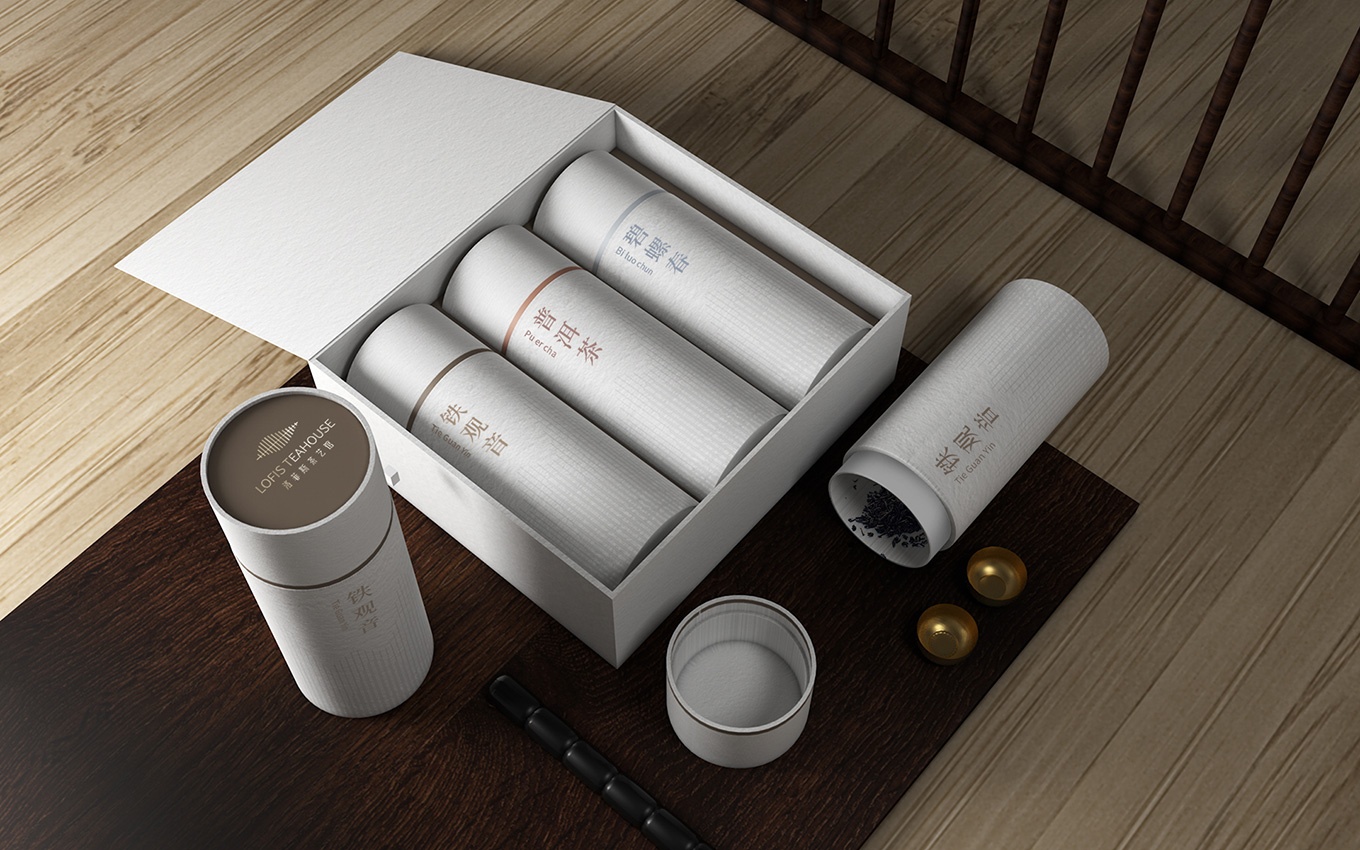
此文是广州品牌策划公司关于设计公司如果推广和营销企业的分享,广州品牌策划公司旨在想让更多的设计公司提高设计业务能力!
 注:配图为UCI设计公司作品
注:配图为UCI设计公司作品
所以,你已经决定创建(或再造)你的电子商务网站!这需要做大量的工作,但无论你是一个老牌零售商还是一个有抱负的数字企业家,你都来对了地方。
在这篇文章中,我们将带你走过设计和建立一个电子商务网站的过程。就本文的目的而言,我假设你已经知道你要在网上卖什么,并且已经建立了你的供应链,但是如果你还不知道,请随时查看这篇博文,寻求如何做到这一点的建议。
我想确保您已经为成功做好了准备,所以我们将在这里深入了解细节。内容很多,所以你可能想把这篇文章收藏起来,然后在建立你的电子商务网站时再回来看。
我们开始吧!
注意,本帖更新于2019年5月。
创建电子商务网站
有很多不同的步骤来创建一个高质量的电子商务网站,将推动你的业务销售。为了使浏览这篇文章更容易,这里有一个我们将要涵盖的内容的快速概述。这样,如果你想跳到过程中的一个特定步骤,你所要做的就是点击适当的步骤,你就可以从那里开始阅读。
选择正确的电子商务平台
设置您的电子商务网站
选择可以销售的模板
创建有效的产品页面
向您的站点添加功能
优化您的电子商务网站
这篇文章超过7000字,所以希望这将使导航更容易一点。现在让我们进入本质!
选择正确的电子商务平台
要想在电子商务领域取得真正的成功,你需要选择正确的电子商务平台。好吧,如果你真的擅长编码,而且有大把的时间,我想你可以创建自己的电子商务解决方案,但这可能不是你想要的。
所以,在你创建你的电子商务网站之前,你需要选择一个电子商务平台。
好消息是,现在有很多电子商务平台。坏消息是,大量的选项会让你很难确定哪个平台适合你的需求。如果你已经开始考虑你的选择,你可能已经亲眼看到有多少不同的功能可供选择。
即使在像这样的博客文章中,比较和彻底评估每一个电子商务选项也是势不可挡的,坦率地说没有太大帮助。因此,在本文中,我将重点介绍5个最受欢迎的电子商务平台:Shopify、3dcart、Magento、Volusion和大卡特尔.
然而,因为我很清楚这些"五大"并不是唯一的选择,我们将看看这些电子商务平台在对你这个潜在客户来说很重要的5个方面如何:定价、易用性、模板、插件和客户支持。这样,即使我们没有讨论的平台吸引了你的眼球,你也会有一个很好的框架来评估它们。
1.电子商务平台:定价
如果你像我一样,在选择电子商务平台时,你首先想到的是,"这要花我多少钱?"毕竟,许多电子商务企业需要一段时间才能开始产生有意义的利润,在没有收入保证的情况下在电子商务平台上花费大量资金可能有点可怕。
记住这一点,让我们来看看这些平台的相对价格:
| Big Cartel | $0/mo | $19.99/mo | $29.99/mo |
| Volusion | $15/mo | $35/mo | $135/mo |
| Shopify | $29/mo | $79/mo | $299/mo |
| 3dcart | $29/mo | $79/mo | $229/mo |
| Magento | $0/mo | $2,000/mo | $3,417+/mo |
正如你所看到的,大卡特尔无疑是我们名单上最便宜的选择,尤其是对那些刚刚起步的人来说。甚至他们最贵的选项和购物化最便宜的选项价格一样。
虽然很难对免费说"不",但定价并不是唯一要考虑的因素(否则,这篇文章就完了)。如果你打算投入大量时间和精力创建一个盈利的电子商务商店,选择一个能满足你长期需求的平台可能比选择一个最便宜的平台更重要。
例如,如果你计划拥有一个大的在线库存,Shopify是一个很好的考虑平台。它的扩展性非常好,可以轻松处理大量流量的需求。如果你的商店起飞了,你会很感激你决定从9美元/月的平台开始,而不是免费的。
作为一个简短的旁注,如果Magento的价格标签让你心脏病发作,请记住Magento是一个众包电子商务平台。如果你擅长编码(或者认识一些擅长编码的人),你可以很容易地用很少的钱建立一个强大的电子商务商店。
然而,如果你不是特别精通技术,你就需要雇佣一个开发者(通过Magento或者直接雇佣),这会很快变得昂贵。
尽管我生性节俭,我还是建议根据你的需求(和预期需求)来选择你的电子商务平台,而不是平台的价格。从长远来看,选择正确的平台将比节省几美元(甚至几百美元)更有价值。
2.电子商务平台:易用性
如果你是电子商务新手,易用性可能是最重要的。特性很棒,但是如果你没有使用它们的知识和专业技能,世界上所有的特性和可定制性都没有多大意义。
幸运的是,我们在这篇文章中讨论的所有5个电子商务平台都很容易使用,它们都带有一个设置向导,将带你完成设置你的商店的过程。然而,创建你的第一个商店并不是唯一要考虑的易用性因素。
一旦你的商店建立起来,有很多东西需要优化。一个电子商务平台如何管理你的库存,以及它提供的设计功能选项,都会影响到一个平台的长期易用性。
购物化
购物化让设置变得异常简单。它有一个非常简单的仪表板,可以添加产品,定制你的网站设计等等。如果你碰巧从另一个平台转到购物,购物也有一个灵活的导入选项。
在你的商店建立后,Shopify还可以很容易地添加额外的产品,包括标题、描述、价格和其他几个方便的字段。不管你具体想做什么,Shopify到处都有方便的提示,在我看来,它是这个列表中最用户友好的平台。
体积
像购物化一样,Volusion可以让您轻松建立自己的商店。尽管体积的商店创建过程没有购物化的仪表盘那么吸引人,但它并不难操作,所以你可以快速启动并运行。
之后添加产品也是一件简单的事情,但是如果你想在初始设置过程之后改变你的站点的外观,事情会变得更加复杂。在这一点上,你基本上需要知道如何编码来改变任何东西,这不是很好,因为你的第一个设计很少是完美的。
大卡特尔
早期,大卡特尔的易用性与大多数其他平台不相上下。和大卡特尔一起开店轻而易举。
然而,大卡特尔是专门为艺术家和制造商设计的,他们想要一种简单的方式在网上销售一些物品,所以它的长期选择非常有限。你只有几个模板可供选择,几乎没有商店定制选项。要脱离大卡特尔的核心设置选项,你需要一些严肃的编码。
3dcart
使用3dcart建立商店不像使用购物化或体积建立商店那么简单,但这主要是因为3dcart提供了大量可以用来定制商店的功能。
如果所有这些功能听起来有点吓人,不要担心,3dcart有大量的教程可以用来充分利用该平台,还有一个干净的向导,它提供的设置过程与购物化一样简单。
与它的一些竞争对手不同,3dcart没有拖放式可视化编辑器,但它至少有一个有限的可视化编辑器,即使你的半铸钢钢性铸铁(Cast Semi-Steel)或超文本标记语言功夫很弱,也可以用来编辑你的网站。这对刚接触电子商务的人来说非常好,因为你可以定制你的商店,而不必雇佣开发人员。
Magento
正如我之前提到的,Magento是一个开源的电子商务平台,这意味着它是一个由开发者为开发者设计的电子商务平台。因此,它的特点和可定制性很高,而易用性很低。不要期望在没有开发者的情况下Magento能走得很远。
3.电子商务平台:模板
你的电子商务商店的新访客在0.2秒内形成对你的品牌的看法。是什么产生了这种观点?这不是你的产品、价格或拷贝,而是你的网站设计。
人们本能地不信任设计糟糕的网站,所以如果你的商店不好看,可能很难带来销售。不幸的是,不是每个人都是天生的艺术家,雇佣一个设计师来弥补你的创作缺陷会很昂贵。
这就是模板派上用场的地方。
这个列表中的所有电子商务平台都至少提供了一些设计模板,你可以用它们来给你的商店一个精致、专业的外观,但是有几个平台在这个领域非常突出:Shopify和Magento .
购物化提供了几十个美观实用的主题(又名模板)供你选择。有些是免费的,有些要140-180美元。
同样,Magento在Magento市场上提供了几十个付费和免费主题:
你还可以在第三方网站上找到很多Magento和购物化主题,比如主题森林或模板怪兽,这样你就有数百个主题可供选择。
从历史上来看,3dcart没有太多的主题,那些看起来很过时的主题。然而现在,3dcart提供的免费和付费主题几乎和购物化或Magento一样多。主题可能不像购物化或Magento上的那样精美,但由于在3dcart上定制设计非常容易,所以这个问题很容易解决。
3dcart、Magento和购物化的所有主题都设计精美,在说服潜在客户购买方面做得很好。此外,由于所有这些模板触手可及,这些电子商务平台可以轻松赋予您的商店独特的外观和感觉,使其在竞争中脱颖而出。
相比之下,大卡特尔和体积并没有提供太多的模板。他们只提供几个主题,而且这些主题都非常简单。再加上在这些平台上定制你的设计有多困难,你可能需要付钱给设计师和开发者来得到你想要的设计。
4.电子商务平台:插件
选择电子商务平台时要考虑的另一个因素是它们提供的插件选项。虽然如果每个电子商务平台都提供你可能需要的所有可能的应用程序和插件会很好,但不同的企业需要不同的插件,所以大多数平台不会将每个插件都作为标准包的一部分。
好消息是,即使您不是开发人员,插件也能让您定制商店的功能。
有些插件会给你一些选项,比如"免费送货"栏或优惠券弹出窗口,帮助改善你的用户体验(以及他们购买的几率)。其他人在你的商店后端给你额外的选择,比如检查你的页面是否为搜索引擎优化。
说到插件,Magento绝对是最棒的Magento市场提供了上千种扩展,你可以在你的电子商务网站上做任何你能想到的事情。
相比之下,Shopify提供的插件(称为"应用程序")要少得多,但他们拥有的插件非常方便,可以定制,所以你通常可以找到一种方法让你的网站做你想做的事情——即使你没有成千上万的插件选项。
3dcart也有一些插件,但它们没有购物化那么多,也更难找到。
大卡特尔和体积在这个部门再次出现短缺Volusion只提供一个应用程序,大卡特尔实际上不提供任何应用程序(从技术上讲,他们有你可以启用的"插件",但它更像是打开特定的功能,如谷歌分析跟踪)。同样,如果你手头有开发自己的定制插件的专业知识,这些平台可能会很棒,但如果没有开发人员,定制你的商店可能会很困难。
5.电子商务平台:客户支持
最后,许多有抱负的电子商务企业主未能考虑的一件事是他们选择的平台附带的客户服务选项。让我们现实一点,如果你正在创建自己的商店,教程和指南只能让你到此为止——有时,你可能需要与人交谈。
在这里、Shopify、Magento和3dcart是明显的赢家。这两个电子商务平台都提供全天候电话、聊天和电子邮件支持。
相比之下,Volusion提供全天候的电子邮件和聊天支持,但可能并不总是提供电话支持。但是,如果你像我一样喜欢打字而不是说话,这可能不是问题。
不幸的是,大卡特尔在客户服务部门的可达性方面排名最后。只要晚上没有什么不好的事情发生,并且你愿意等待他们通过电子邮件回复,一切都应该没问题…但是如果你在正常工作时间之外遇到了严重的问题,你就只能靠自己了。
当然,所有这些电子商务平台都有一个知识库,可以涵盖你可能遇到的大多数问题Shopify和Magento尤其如此,它们拥有最大的用户群,因此拥有最多的论坛活动和用户生成的内容。
老实说,对于大多数问题,使用平台现有的知识库是最容易的,但对于那些无法在网上找到解决方案的时候,良好的客户服务可以成为救命稻草。
总结所有这些信息,没有适合每个电子商务网站的"正确"平台。许多零售商几乎可以在这些平台上做得很好Shopify、Magento、Volusion甚至Wix、woo commerce……只要你挑到最符合自己需求的平台,都没关系。
设置您的电子商务网站
一旦你选择了一个平台,设置就相当容易了。帐户创建过程相当简单,通常会要求您提供姓名、企业名称、企业地址和账单信息等信息。
创建帐户后,您将进入平台的店面构建器,通常如下所示:
大卡特尔的店面建筑商。
店面建造者是您执行大部分商店管理任务(添加/管理产品页面、销售、库存、支付处理、运输等)的地方,所以花几分钟时间熟悉一下这个界面是个好主意。
了解如何使用店面经理的最简单方法是通过视觉,因此这里有一些关于如何使用一些更受欢迎的店面建筑商的视频教程链接:
3dcart
大卡特尔
大商业
Magento
购物化
体积
Weebly
威克斯
网络商务
顺便说一下,如果你喜欢书面教程,请随时搜索我们的博客,了解如何使用你选择的电子商务平台建立和管理商店的详细说明。我们几乎每个主要平台都有文章,你应该能找到你需要的帮助。如果没有,请在评论中告诉我,我很乐意帮助你!
选择可以销售的模板
虽然大多数电子商务平台都不遗余力地让学习建立和管理你的商店的基本技巧变得容易,但创建一个真正为你的客户服务的电子商务网站取决于你。
由于雇佣一名设计师来为你的网站创造完美的外观和感觉(以及一名开发人员来实现这种设计)是昂贵的,大多数电子商务企业选择使用下一个最好的东西:预先设计的模板或主题。
正如我们之前所讨论的,大多数电子商务平台都有一些免费和付费的模板,零售商可以使用它们来定制电子商务网站的外观、感觉和功能。您可以在以下几个地方寻找模板:
大商业
购物化
Magento
模板怪物
主题森林
体积
威克斯
有了这些选择,你很容易去寻找一个符合你口味的设计。
不幸的是,你有多喜欢一个模板并不能很好的预测你的受众会如何反应。要想知道你的用户想从你的网站中得到什么,最好的方法是测试你的网站的不同元素(稍后会有更多的介绍),但是因为你才刚刚开始,在你选择和定制你的模板时,请记住以下几点:
横幅越小=销售越多
一般来说,大横幅鼓励网站访问者关注你企业的品牌元素(徽标等)。较小的横幅鼓励访问者关注你的产品。
我们测试了各种网站,发现较小的横幅对您的企业来说意味着更多的销售。你很想选择一个主题来突出你的标志,但是记住,你的网站是为了创造一个用户友好的体验,而不仅仅是为了推广你的品牌。
例如,样式主题保持标题横幅内容简短,并将重点放在产品上:
点击此处查看商店演示。
然而,虽然小横幅往往表现更好,但请记住,小横幅不会给你很多空间来谈论你独特的价值主张或呼吁采取行动。但是,通过在页面上插入图片并在图片上覆盖文字,你仍然可以在页面上处理这些问题。
确保搜索体验非常棒
根据我们的经验,在电子商务网站上搜索东西的人比使用导航按钮的访问者更有可能购买2-4倍的东西,因此融入页面的搜索栏是对潜力的浪费。根据我们的经验,将搜索栏移动到页面顶部可以增加15-40%的内部搜索。
例如,卡维尔主题在使搜索栏易于访问方面做得很好:
点击此处查看商店演示。
当然,一些模板使得搜索栏在桌面上很容易找到,然后在手机上隐藏在菜单中,所以在选择主题时要留意这一点卡维尔在这方面也做得很好:
不幸的是,卡维尔的搜索结果页面还有待改进。网格格式搜索结果限制了在用户点击进入产品显示页面(PDP)之前可以显示的信息。相比之下,列表格式允许用户至少看到产品描述的一部分,以确定哪个是正确的产品,增加了他们购买的可能性。
寻找"快速查看"按钮
搜索和/或分类页面上的"快速查看"按钮可以打开简化的产品页面,这是提升商店体验的绝佳方式。如果你出售低价物品(或者很少定制的物品),"快速购物"窗口可以大大增加购物车的容量。
你可以在各种各样的主题中找到这个特性,比如运动员(如下)。或者,如果您喜欢没有此功能的模板,并且不介意付费添加它,您可以使用各种扩展在您的商店中获得此功能:
点击此处查看演示商店。
在我们的网站测试中,我们发现删除"快速查看"窗口
ecreased cart additions by 17% and conversion rates by 6%. Placing more prominence on the quick shop option increases cart additions by +8% and conversion rates by +3%.While cart additions from a “quick view” window are not as high-intent as those from a product page, the volume of cart additions resulting from this option creates enough conversions to outperform the alternative.
Of course, if you really want to make the most of your category and search results pages (and you should), look for a theme that pairs “quick shop” buttons with great filtering options like the ones found in the Magetique theme.
View demo store here.
The ability to filter down options and find the perfect product is particularly important if you’re selling for high-price, highly-customizable items (think auto parts, technology, instruments, etc).
Avoid “Ghost” ButtonsOne thing to watch out for in a Magento theme is ghost buttons (transparent buttons with a thin border) in the home page banner. Our tests have shown that swapping a ghost button for a brightly colored button can increase clicks on the button up to 50% (that’s a lot, considering it’s the main button people see when they arrive on your page).
For example, be very careful with a theme like?Retina:
View demo store here.
Can you see how hard the buttons are to read?
To be fair, if you’re careful about your design choices, you can get away with “ghost” buttons. For example, in this rendition of the Fona template, the designer created a lot of visual contrast between the text and the image in this particular screenshot, which helps the “ghost” buttons stand out:
View demo store here.
However, while you can work around “ghost” buttons in your final design, picking a theme that features “ghost” buttons means you’ll always have work around that with the imagery you choose to use. Otherwise, you can end up losing a lot of potential sales.
Keeping these elements in mind can help you choose a template that is more likely to drive sales from day one, but you’ll still want to test things to get the most out of your ecommerce website. But, for now, let’s focus on getting your product pages set up right.
Creating Effective Product PagesIt’s fairly easy to add products and product pages to your store in most ecommerce platforms. However, if you really want your products to sell, you need approach your product pages the right way.
The easiest way to show you how to set things up right is to show you an example, so let’s take a look at how to effectively set up product pages in Shopify. Like most ecommerce platforms, when you add a product or create a product page, Shopify gives you a variety of fields to complete.
Most of these fields are fairly straightforward product organization or shipping fields. You should be able to complete these fields using the information in your product catalog.
However, getting your title, description and images right can have a huge impact on the success or failure of your store. Outside of work, I create and collect costumes, so I’m going to use a pair of pauldrons (medieval shoulder armor) to discuss how to effectively complete these fields on your product pages.
Title & DescriptionYour title and description field contain text that tells your potential customers what your product is, how it’s made, what it does and other important information.
In addition to telling your customers about your product, your title and description are what Google will look at for determining which organic searches your product can show up for.
It’s important to note that these organic search result placements are different than paid search text ads or Google Shopping ads.
If your product page ranks organically for a particular search, you can get clicks to your page for free. However, there’s no guarantee that your product page will rank organically—even if your product is a perfect match for someone’s search.
You can improve the likelihood that your product page will show up for a relevant search by optimizing your title and description (this is called “search engine optimization” or “SEO”), but even the most optimized page can still struggle to rank—especially there is a lot of competition for your target keyword(s).
To tweak how your title, meta description and URL will appear on Google, expand the “Search engine listing preview” at the bottom of the “Add products” page:
With Google Shopping ads and text ads, you have to pay for every click. However, if you’re willing to spend enough, you can guarantee that your product page shows up for relevant searches.
There’s a lot of debate out there about what constitutes a “good” product title and description. But, most experts agree, your product page content should cater to your customers.
So, if you’re selling an expensive product to an audience that cares all about the specific details and features of that product, your description should cover all of those features in detail. On the other hand, if you’re selling a cheap, run-of-the-mill item, you might want to keep your description short and sweet to avoid overwhelming potential customers.
ImagesIn online shopping, image quality matters…a lot! Since people can’t actually examine your product in person, they are forced to rely on your images to make a decision.
So, if you don’t have great images, you probably won’t have great sales, either.
Image OptimizationIdeally, it’s best to have high-quality, clear images taken from a variety of angles. In addition, if your product has special features that you want to highlight (detailed embroidery, hand-carved trim, etc), it’s a good idea to include specific photographs of those features on your page.
Another great way to get more out of your images is to feature them in actual use. This helps people envision what owning or using the product will be like.
For example, most people who are interested in buying medieval armor want to look like (or have their significant other look like) a studly, manly knight, so including pictures like this might help convince people to buy:
Images used with permission (Source).
As you photograph your products, make sure that your lighting and color schemes match the feelings you want people to associate with your product. Hi-tech products look best in clean or high-contrast environments, while eco-friendly products work better with more natural hues, tones and backgrounds.
If photography isn’t your thing, many products come with high-quality photos from the manufacturer. If that isn’t the case (or you think custom photos will sell better), you can also find a professional photographer through Shopify Partners.
Loading Speed OptimizationUnfortunately, images are something of a double-edged sword. While high-quality images are great at convincing people to buy, they can also slow down your website.
Most people will only tolerate a page load time of about 2 seconds, so if those beautiful photos don’t load quickly, they could end up killing off potential sales instead of aiding them!
As a general rule of thumb, each image should be less than 70 kb.
Now, most high-quality photos are a lot bigger than 70 kb, so you’ll probably need to resize them for your product page. The easiest way to do this is to use photo-editing software like GIMP (free, but clunky) or Adobe Photoshop (easy, but costs money).
To resize your photos in Photoshop, open your image in Photoshop and click File > Export > Save for Web:
From there, you can play around with a variety of settings until you find the right balance between file size and image quality (color-coded to match where they show up in the image below):
Quality.?Lower numbers = lower image quality and lower file size. File format.?In terms of file size, JPEG < GIF < PNG. But, the same rule applies to image quality. Optimization.?Checking the box tells Photoshop to optimize your image for web use (decreases image size). Color.?Fewer colors =?lower image quality and lower file size. Image size.?Allows you to choose the actual number of pixels in your image. Fewer pixels = smaller image and lower file size. Keep in mind that if you save an image at smaller size than it will be shown on your page, your image may be stretched to fit your page, resulting in heavy pixelation and/or image distortion.You can see the file size in the bottom left-hand corner of the window. This number—along with a preview of your final image—will update as you make changes to your export settings.
Yes, I’m saving my “Save for Web” screen shot in the “Save for Web” window. I just couldn’t resist adding an “Inception” moment here…
Photoshop’s “Save for Web” tool (other photo editing programs have similar tools) make it fairly easy to balance image quality and file size. That way, you can make sure that your pictures really sell your products without compromising on load speed.
Adding Features to Your SiteAs you can probably imagine, an electronics store probably wants different features on their website than a custom T-shirt business does. As a result, most ecommerce platforms offer a variety of plug-ins you can use to add special features to your website.
Some ecommerce platforms—like Magento and Shopify—offer almost endless customization options, while others only offer a few standard plug-ins.
Here are some good places to look for plug-ins for your store:
3dcart BigCommerce Codecanyon Magento Shopify Volusion Weebly Wix WooCommerceHere again, you’ll want to be thoughtful about which plug-ins and features you add to your ecommerce website. Sometimes features help drive sales and sometimes, they drive sales away.
Plug-ins are another great testing opportunity, but to give you some direction while you’re setting up your ecommerce website, let’s take a look at a few different types of plug-ins to consider:
Reviews Plug-insOne of the best ways to convince people to trust your products and your store is with reviews. A plug-in like Yotpo?(available on multiple ecommerce platforms) is a great way to?collect and display this sort of invaluable user-generated content (UGC).
A good reviews plug-in like Yotpo will:
Send well-timed emails to customers asking for reviews Give you a way to display reviews on your ecommerce webiste Give you full moderation control Help push traffic from Facebook and Twitter Display your product ratings on Google ShoppingSince even just one good product review can lead to a 10% increase in sales, ensuring that your website can collect and feature reviews on your products is a near-must for almost any ecommerce website.
Shopping Cart Plug-insThe better your shopping cart experience is, the more sales you will get. With cart abandonment rates floating around 80%, anything you can do to make your shopping cart experience easier and more intuitive is a step in the right direction.
Using a simple plug-in like?Persistent Cart?to keep your customers’ shopping cart items, well, in their shopping cart is an easy way to improve your cart experience. Similarly, you can use plug-ins like?WishList Plus?to give people a way to save items they aren’t quite ready to buy.
If you can get people to create an account to save their wish list to, you can use a plug-in like?Mageware’s?Abandoned Cart Email Extension?to send cart abandonment emails encouraging people to come back and make a purchase. Cart abandonment emails have increased sales by 8-12% in some studies, so these types of plug-ins can be worth their weight in gold.
Product Info Plug-insSites that empower customers sell more than sites that don’t. It’s a simple but undeniable fact. Using a plug-in like the Wiser?Product Recommendations app?or Product Compare?allows you to give customers the information they need to pick the best product for their needs.
If you offer a lot of different products, you can use these sorts of plug-ins to create an Amazon-like experience for site visitors, showing them featured products (which are often upsells), best selling products, recently viewed products, new arrivals, or those similar to what they’re currently looking at. The sky’s the limit!
Live Chat Plug-insMany online shoppers prefer live chat to other forms of communication and having it available on your site can increase conversions immediately. A live chat plug-in like Tidio’s Live Chat?or Tawk.to Live Chat?allows you to answer order or product questions quickly and can make a world of difference to your customers.
A good live chat plug-in should offer the following features, at a minimum:
Insight into exactly who is on your site, so you can reach out and offer help Automated messaging Mobile-support Multi-language supportMost live-chat plug-ins are quite affordable, so they are well worth considering.
Adding the right features to your ecommerce website can significantly improve the user-friendliness of your site and, as a result, increases sales. Of course, the right set of plug-ins for your business will depend on your ecommerce platform, target audience, product offering and business needs, but this list should help get you pointed in the right direction.
Optimizing Your Ecommerce WebsiteAt this point, you know enough to get your ecommerce website launched. However, that’s just the beginning. As your customer base grows, you’ll want to start optimizing your website for maximum performance.
To do that, you’ll need to do something called “conversion rate optimization” (CRO). Simply put, the conversion rate of your ecommerce website is the?number of sales you get in a given time frame, divided by the total number of people who visited your site or landing page (multiplied by 100%).
Conversion rate = (sales / total visitors) * 100%
For example, if your site had 17,492 visitors and 2,305 sales last month, your conversion rate is 13.18%. Easy enough, right?
While calculating your conversion rate is simple enough, optimizing your conversion rate takes a lot of time, thought and work. However, the results are worth it. In our experience, CRO testing consistently increases our clients’ ecommerce conversion rates by 20-50% in a matter of months…and things just get better from there.
In other words, if you aren’t testing your ecommerce website, you could missing out on countless sales!
To help you get started, here are a few different ways to get more sales out of your website through CRO testing:
Eliminate DiversionsOne problem many ecommerce websites struggle with is too many diversions. Diversions are anything that has the potential to distract your user from reaching their destination.
Contrasting buttons, images, other offers, menus, links, content, pop ups…like cloud cover on launch day, if it leads people off course, it’s a diversion.
For example, take a look at the page below. There are 5 major elements on the page competing for your attention—none of which take a potential customer to view a product—and that’s just above the fold!
What does this business really want people to do? Watch a video? Read a review? Look at the picture? Read the Q&A? Visit their cart?
As it turns out, the answer is “none of the above”.
This page is from a client of ours who—like most e-retailers—simple wanted people to come to their site, look at their products and make a purchase. But, with all the diversions on their site, people were getting lost before they even had a chance to see the client’s products.
To put the focus where it belonged—on the products—we tried eliminating all of the diversions by redesigning the site experience to focus on product call to actions. That way, when people came to the page, they immediately saw this company’s products and a simple call to action (CTA) that said “Shop Our Products”.
The new page design increased revenue (not just conversions) by 69.2%!
We’ve seen similar results with many of our ecommerce clients. For example, we often test to see how removing different elements and offers from a client’s homepage affects their conversion rates (this is called “existence testing”).
Existence testing is one of the easiest, fastest ways to discover what is distracting from conversions and what is helping conversions.
If you remove something from your page and conversion rates go down, that item is helpful to the conversion process. If you remove something and conversion rates go up…bingo! You found a distraction.
The GIF below shows you how this works. Essentially, you just remove a page element and then see which version of the page performs better. Easy enough, right?
In the case of this particular client, we tested to see how removing 8 different elements from their home page would affect their revenue. As it turned out, 6 of the 8 elements were actually decreasing their revenue!
By eliminating those elements during our test, their revenue-per-visit (RPV) increased by 59%.
Why? Well, once again, we discovered things that were diversions to the user experience (as it turns out, the diversions were other products!).
Unfortunately, you can only do existence testing?after your site is up and running. However, even without testing your store, minimizing diversions is almost always a good way to get more out of your theme.
Simply take a step back from your site and ask yourself, “What do I want people to do when they visit this page?”
If you have page elements that are distracting or diverting people from doing what you want them to on your site, you need to make a change.
Reduce AnxietyEver have that moment when you’re driving a car and you suddenly get hit by a huge gust of wind? What happens to your heart rate?
Whether you’re in the driver’s seat or an office chair, anxiety is never a good thing. Unfortunately, when it comes to your site, people are already in a state of high alert. Anything that adds to their stress level (clicking on something that isn’t clickable, feeling confused or swindled) may lead to you losing a customer.
As a quick example, one of our ecommerce clients had a mobile page that forced users to scroll all the the way back up to the top of the page to make a purchase.
So, we decided to try a floating “Buy Now” button that people could use to quickly buy the item once they’d read all about it:
Yes, scrolling to the top of the page seems like a relatively small inconvenience, but eliminating this source of anxiety improved the conversion rate by 6.7%.
Even more importantly, it increased the RPV by $1.54.
Given the client’s traffic volume, this was a huge win!
As you can probably imagine, the less confusion, alarm, frustration and work your site creates for users, the more likely they are to buy.
When you get right down to it, making a purchase should be a seamless, almost brainless process. If a potential customer ever stops to think, “Wait, what?” on their buyer journey, you’ve got a real problem.
To identify potential anxiety-inducing elements on your site or page, try going through the whole purchasing process on your site (better yet, have someone else do it and describe their experience to you). Watch for situations or content that force you to think. Odds are, you’ve just discovered a way to improve your theme.
Offer DiscountsAny good retailer knows that discounts sell product, but to get the most out of your discounts, all you have to do is remember one simple truth: people don’t like math.
Sure, your customers may be bargain hunters, but if you phrase your deal the right way, many people won’t bother to do the actual math—they’ll just assume you’re selling things for cheaper than the other guys.
Take the?“Rule of 100”, for example.
This rule states that, for products with a price under $100, displaying the discount in terms of a percentage (a relative metric) is more powerful because the percentage will be a larger number than the actual dollars saved with the discount.
If a product costs $10, a $1 discount represents 10% off the price. Getting 10% off may be perceived as a larger discount than the $1 savings (since 10 is bigger than 1).
On the other hand, for products that cost over $100, showing the discount in terms of dollars off the original price (an absolute metric) is more powerful since the dollar amount will be a larger number than the percentage of actual discount.
The Power of DiscountsNow, this isn’t all just a nice theory. One of our clients sells high-end parts and accessories for outdoor, all-terrain vehicles. Most of their products have a high price point (over $100), so their customers are sensitive to sales and promotions.
However, since this client’s margins are fairly slim (typical for this industry), they can’t really afford to do the sorts of mega-sales you see stores like Hobby Lobby or Wal-Mart offer. But, they do offer the regular wholesale discount a manufacturer passes on to them on every product (around 10% on most items).
With a fairly fixed discount price like this, we knew we had to make every deal look as compelling as possible.
Originally, the client had been using a basic “percent off” model to advertise their discounts. So, if a part cost $300 and the discount was 10% ($30), the page said “You Save 10%”. If a part cost $3,000 and the discount was 10% ($300), the page still said “You Save 10%”. Unfortunately, this meant that while the actual savings could vary significantly, the perceived savings were identical.
Taking all of that into account, we decided to give the “Rule of 100” a shot.
Instead of listing the percent off for products over $100, we decided to list the actual discount. That way, potential customers could easily see exactly how much they were saving and how good of a deal they were getting.
For this test, tested the original “percentage off the original price” model…
…against a percentage discount model (since almost all products cost over $100):
After testing 40,000 visitors, the “$ off” discount increased cart visits and sales by 12% and produced $15,000 of additional sales in just two weeks!
We didn’t offer crazy deals. We didn’t cut into their profit margin. All we did was take their existing discounts and offer them in a more compelling way…and you can, too!
Of course, these are just a few testing ideas. You can test almost anything on your website and if you approach it the right way, you can use CRO testing to learn a ton about your customers and give them a site experience that makes it hard?not to buy from you.
ConclusionAnd that’s it! At this point, you’re well on your way to running the ecommerce website of your dreams. Now you just need to figure out how to market it…
But don’t worry, we’ll be here to help you all along the way. Whether it’s implementing analytics, succeeding at Google Shopping, creating an effective Facebook store or anything in between, we’ve got you covered. Come back and check our blog anytime you need a tip (or just leave your question here in the comments).
By the way, if you ever want some help testing your ecommerce website, let me know here or in the comments. We’d love to help!
Did I miss anything in this article? Have any helpful ecommerce website design tips to share? Share your questions, thoughts and opinions in the comments.
Aden AndrusAuthor
Over his career, Aden has developed and marketed millions of dollars of s


总监微信咨询 舒先生

业务咨询 舒先生

业务咨询 付小姐